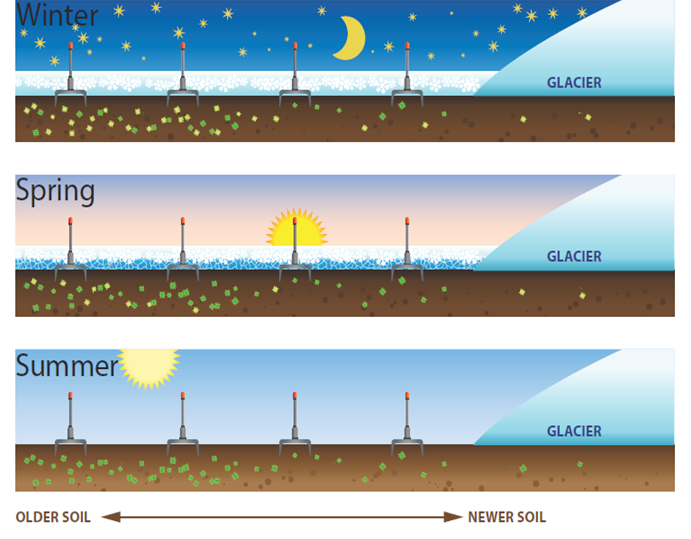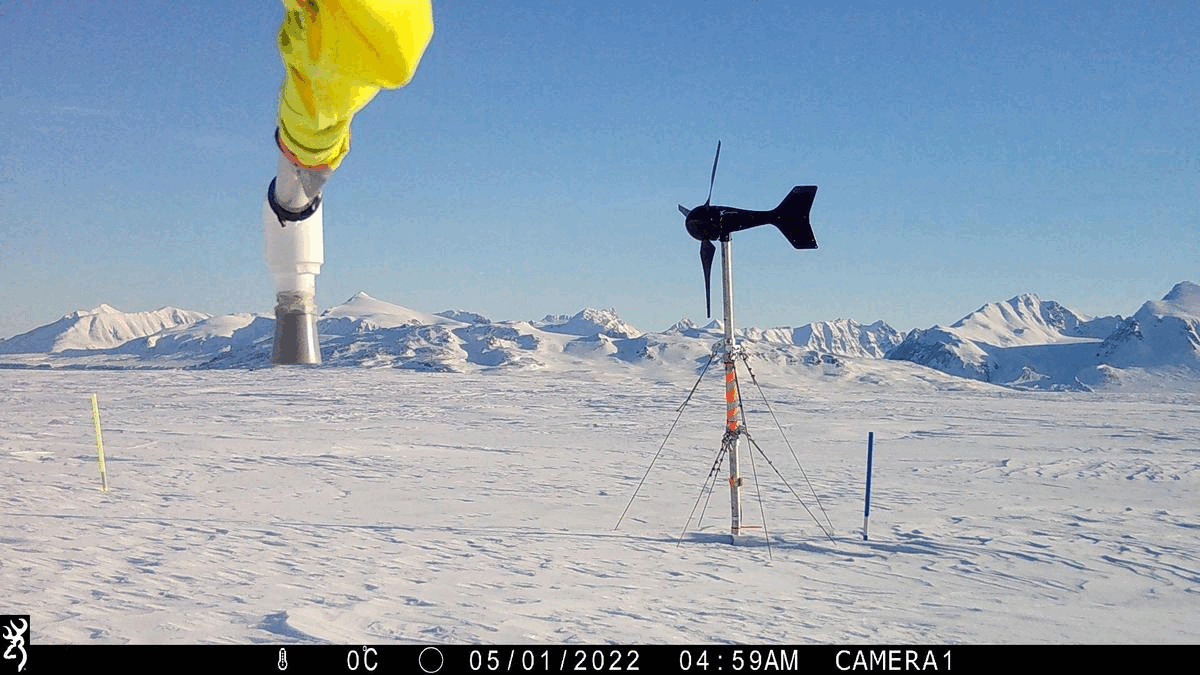The SUN SPEARS project investigates the soil when glacier retreats
In Ny-Ålesund Research Stations scientists from the UK and USA, supported by the NERC Arctic Research Station, are working together to better understand the evolution of recently deglaciated soils. In this article the scientists tells us more about their research in Ny-Ålesund.
A changing landscape
The Arctic has experienced a massive reduction in glacier cover over the recent decades. This however, allowed new terrestrial habitats to develop, which are becoming more and more important for the world’s carbon budget. Our understanding of year-round variability experienced by Arctic soils and its effect on geophysical and biogeochemical processes are impaired because of a lack of year-round data. Our project called SUN-SPEARS, which stands for “Sensors under snow − Seasonal processes in the evolution of Arctic soils”, has the ambition to capture this year-round variability by installing a series of sensors on the forefield of Midtre Lovénbreen glacier, a few miles South-East of Ny-Ålesund. The sensor measurements will be complimented by a microbiological analysis of soil samples from across the forefield, which will tell us a bit more about the existent microbial species and their activity.

Sensors under the snow
As a glacier retreats, it leaves behind a sequence of soils with ages in chronological order, with the youngest closest to the glacier front and the oldest at the edge of the moraine. Our sensors were deployed in two locations across the extent of this soil sequence in order to look at soils of 10 and 50 years old, respectively. Measuring under the snowpack is essential in order to be able to capture the transition between frozen and thawed ground. It is during these periods where microbiological activity experiences the greatest change. The sensors have now obtained a full year record of snow depth, soil temperature, soil moisture content and 3D electrical resistivity. This will help us understand what is the hydrological behavior of the different sites, a driver for microbial activity.

A model of soil evolution
We expect microbiological activity to happen even under the snowpack, but how early in the year and what is the impact of soil age are questions that are yet to be answered. Ultimately, physical, and biological results are to be linked through conceptual and numerical modeling. This would enable us to derive the sensitivity of these soils to environmental change and hopefully predict the development of these growing terrestrial landscapes.
Did you find what you were looking for?